Bluefin tuna farms
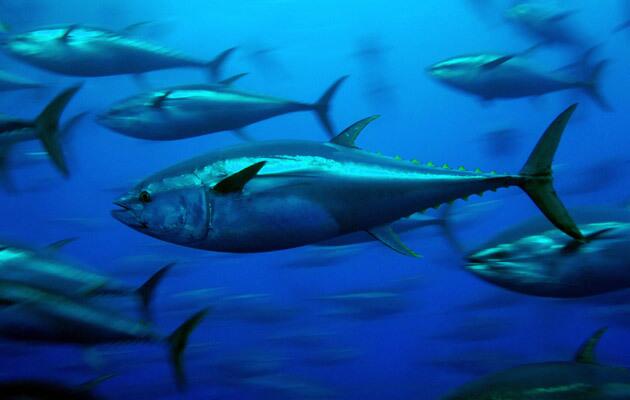
Pacific bluefin spawns in the waters between the Philippines and southern Japan, then migrates more than 6,000 miles to Baja California. It is closely related to the Atlantic bluefin. (Gavin Newman / AFP / Getty Images)
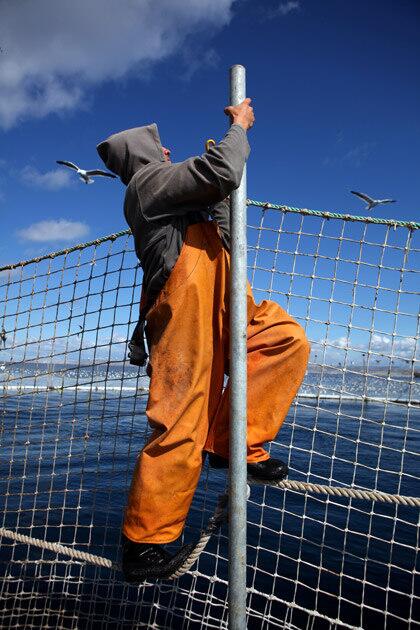
A worker pulls down the net that surrounds the bluefin tuna pen in order to feed the fish. The net protects the fish from seals and sea lions that might come into the cage to feed. (Sachi Cunningham / Los Angeles Times)
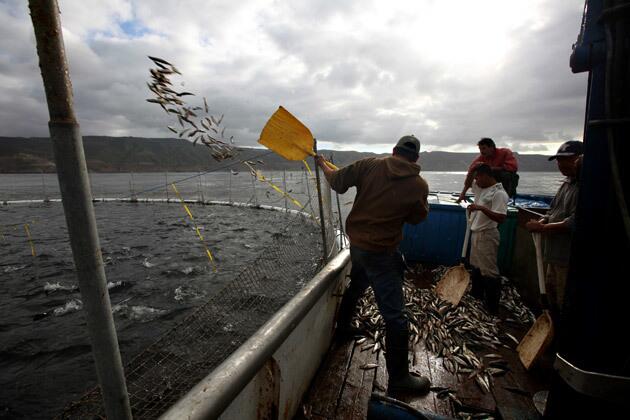
A worker shovels fresh sardines caught nearby into the pens that hold Pacific bluefin tuna. The fish are fed twice a day. The bluefin are raised until their size increases about 30%. (Sachi Cunningham / Los Angeles Times)
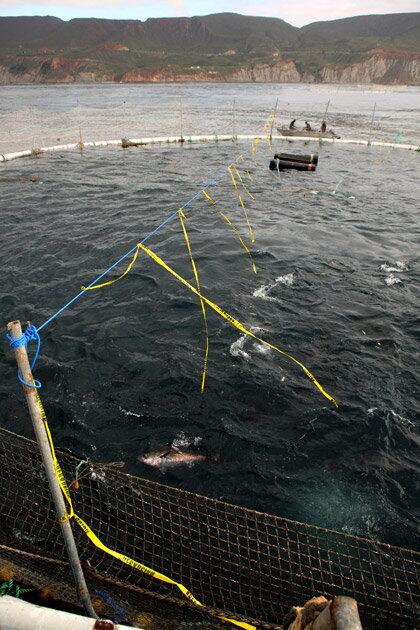
A bluefin tuna turns on its side to snatch some of the sardines that have been thrown into its pen. (Sachi Cunningham / Los Angeles Times)
Advertisement
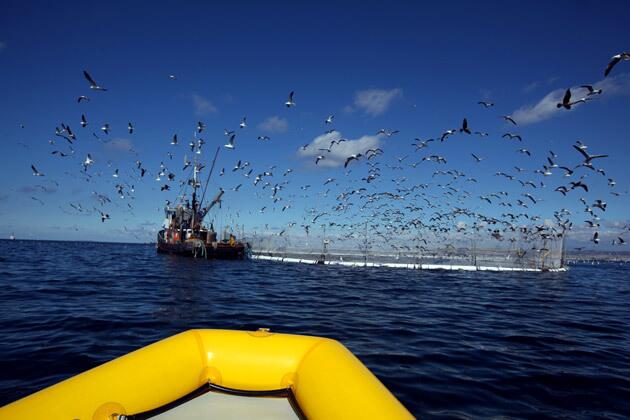
A boat approaches one of the 32 Pacific bluefin tuna pens operated by Umami Seafood, an Icelandic conglomerate. The pens are 100 feet deep and hold up to 60 tons of bluefin tuna caught off the Mexican coast. (Sachi Cunningham / Los Angeles Times)
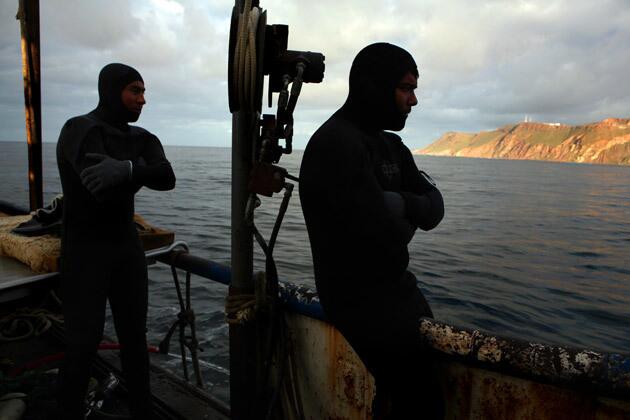
Two divers are suited up and wait to jump into a pen. The divers grab the bluefin by hand and take them to the ship to be slaughtered. (Sachi Cunningham / Los Angeles Times)
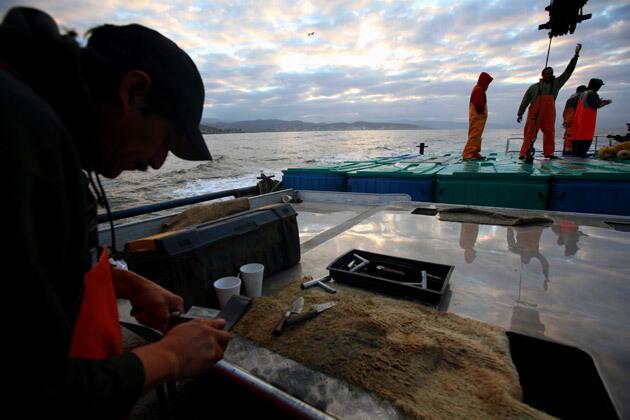
A worker sharpens the knives that will be used to carve up the giant tuna. (Sachi Cunningham / Los Angeles Times)
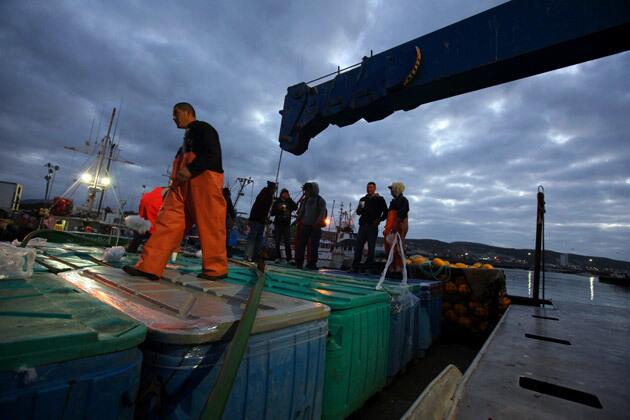
Workers prepare the crates that will soon be filled with Pacific bluefin tuna. The tuna are flown from Los Angeles to Tokyo to be sold in the Tsukiji market. The Baja tuna do not need to be flash frozen. (Sachi Cunningham / Los Angeles Times)
Advertisement

Buyers closely examine bluefin tuna being sold by auction at the Tsukiji market in Japan. The buyers are looking for the texture, color and fat content that will best suit their consumers. Nearly 90% of bluefin tuna are sold at Tsukiji. (Sachi Cunningham / Los Angeles Times)
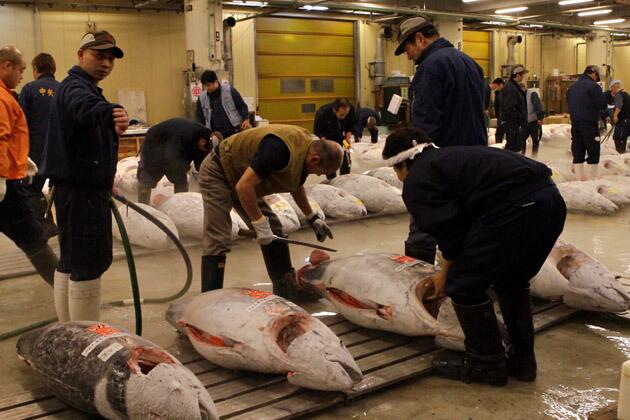
Buyers closely examine the frozen bluefin tuna. (Sachi Cunningham / Los Angeles Times)
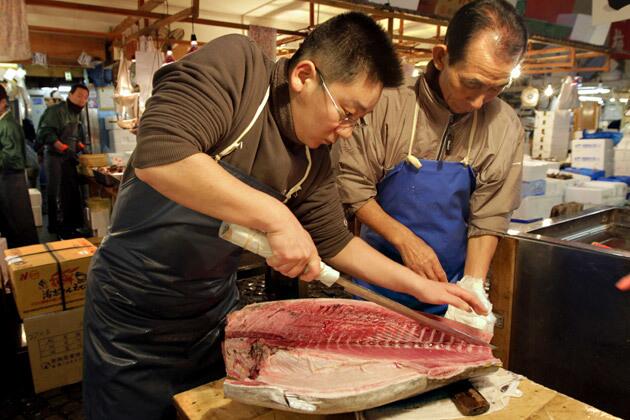
Market workers carefully carve a Pacific bluefin tuna from Umami Seafood’s pens in Baja. (Sachi Cunningham / Los Angeles Times)
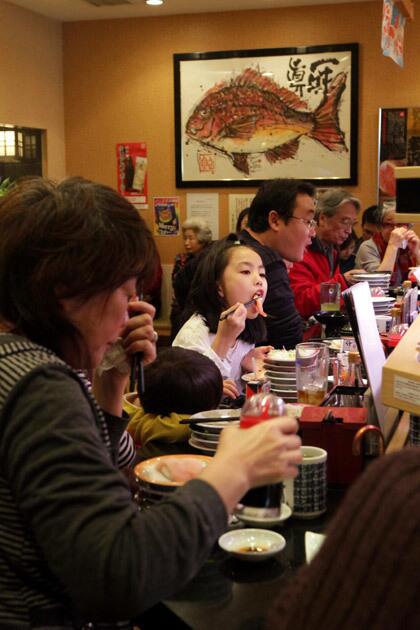
A girl eats a fresh piece of tuna at a restaurant. This style of sushi, “kaiten sushi,” is blamed for the over-consumption of bluefin. (Sachi Cunningham / Los Angeles Times)







